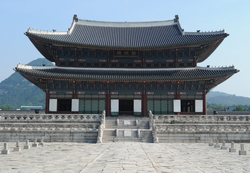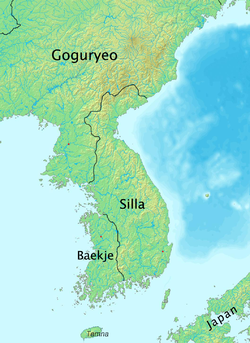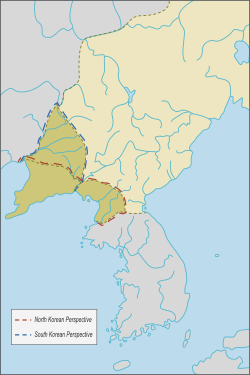Contents
- Early history
- Proto-Three Kingdoms
- Three Kingdoms
- North–South States period and Later Three Kingdoms
- Goryeo
- Joseon
- Imjin War
- Late Joseon period
- Korean Empire
- Japanese colonial period
- Division of Korea
- Korean War
- Modern period
- Gallery
- See also
- References
- Sources
- Further reading
- External links
| History of Korea |
|---|
 |
| Timeline |
This is a timeline of Korean history.











































